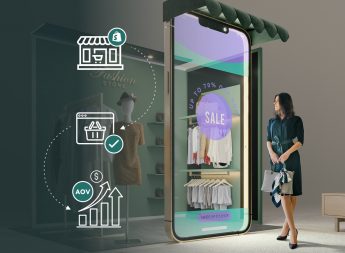Creating an Ecommerce MVP using Shopify

In fact, as many as 90% of startups fail. In this guide, we’ll show you how to avoid the potential pitfalls and create a better product by making a Shopify ecommerce MVP.
Does a target audience exist for your idea? How do you measure up against the competition? Is there a need for your products and services? Do the public relate to your branding and message? What are some of the immediate technical, operational, and business-related obstacles you will face?
The answers to these questions are twice as important when launching an ecommerce platform because it’s not only a for-profit business but also a technological product.
An MVP can give you answers to some, or all, of these questions before going beyond the point of no return
What is an ecommerce MVP?
A minimal viable product (MVP) is a fully-functional version of your end product with its most important core features that can be used by early adopters. As you’ll see, there are a number of ways you can develop an ecommerce MVP, by scaling down your catalog, features, market, etc.
An MVP allows you to get the best of both worlds – it allows you to get a better understanding of your product and its place in the market while also getting your business on a roll.
The Benefits of Creating an Ecommerce MVP
Of course, anything you do in the process of developing your ecommerce product should lead to some tangible benefit. If done correctly, an ecommerce MVP can help you build a more successful product in a more stress-free way through the following benefits:
- Establishing your core features and then verifying and perfecting them
- Identifying the most popular features to prioritise for future development (new or existing)
- Validate whether your target audience values your product, service, or offering
- Generating interest and building a customer email list before large-scale investment
- Discovering any flaws in your platform, either from a technical or business perspective
If you lose sight of why you are developing an MVP, it’s easy to miss the mark. Doing so will not only rob you of some of its potential benefits but might even just be a drag on your workflow. By following your steps, you’ll be able to maximise the value out of your MVP.
Shopify-specific benefits:
There are a number of reasons why using Shopify works well with the idea of developing an MVP:
- You can use any type of ecommerce platform with comprehensive features without having to know any code. This will allow you to focus on the business, marketing, and design-side of launching an ecommerce platform instead of the technical implementation. However, if you want to incorporate a unique design or features later on you can do so using Shopify’s own programming language, Liquid.
- By adding product listings to your store, but marking them as “pre-order” or “out of stock”, you can get an idea of whether there is interest in what you have to offer – before actually stocking up. This will drastically minimise your risk and help you further refine your business model.
- Yes, Shopify does cost money – which seems to go against the idea of a lean business model. However, whatever you pay per month, you’ll more than save up in terms of hours saved. You may even save money compared if you plan on hiring a web developer, as custom ecommerce stores can cost thousands of dollars to develop.
- On top of removing technical barriers, Shopify also removes logistical ones. It’s incredibly easy to configure shipping, various payment methods, inventory management, etc. with Shopify compared with implementing this manually.
How to Build an Ecommerce MVP with Shopify
Ok, now that we’ve covered the what and the why, we can get to the how. While everyone’s situation and business idea is unique, generally following these guidelines will put you on the right track:
Step #1: Research what your Competitors Have to Offer
Not doing your research before launching an ecommerce service is like trying to walk a maze blind. Even though the point of an MVP is to help you better understand your place in the market, you can get much more value out of your MVP if you build it with some understanding of the current market conditions.
At the very least, you will want to establish the following:
- Your Competitors: You’ll want to know who they are, how many there are in your niche, their market size/share, and how they got to where they are today. Also, take a look at how each of them differentiates themselves via their branding and marketing. You can probably also learn a few lessons by looking at how their site is built and organised.
- Your Target Audience: It’s not only about who you want to sell to, but also about whether they actually want what you have to offer. You probably already have an idea of your target audience from the product you are selling. However, you can get a more concrete picture by looking at your competitor’s customers. Find them on social media groups, forums, or on actual product reviews/feedback.
Using this information, you can create a map of how the market looks and what your possible role in it will be. You can also start to create actual customer personas which will be helpful later on for branding, direct marketing, and user journeys/flows.
Step #2: Define your Value Proposition
Ok, now that you have a picture of the puzzle, it’s time to find out where your piece fits in. The first step is to find a way to uniquely differentiate yourself from the rest. You’ll also want to find the one way in which you can add value to your customer’s lives. There are two ways you can do this:
- Offer something your competitors can’t
- Offer the same as your competitors, but do it better – faster, safer, cheaper, more convenient, etc.
Your value proposition can take a number of forms:
- Your specific branding or voice
- A unique catalog of products or services
- Technical capabilities, such as making it easy to search or filter for the right products, make accurate suggestions, offering the best/widest range of payment methods, etc.
- Offering free or fast shipping
- Running the best deals or promotions at opportune times
Shopify does have plenty of strong features built-in that will allow you to distinguish yourself. From huge product catalogs with a massive number of variations to advanced filtering and search tools to product comparisons to developing custom experiences/features in Liquid.
Remember to factor customer expectations into choosing your value proposition. For an ecommerce platform, this means:
- Safe and secure online payments with convenient options
- A broad range of relevant or related products
- A streamlined shopping experience with no second-guessing and clear directions
You might have to consider special expectations if creating something like a marketplace for vendors and consumers or a B2B wholesaler.
Step #3: Define Your Market and Operating Scale
By now, you should know what type of ecommerce platform you are building, such as a vendor marketplace, online store, and whether you are selling digital/physical products or subscription-based services.
Now, it’s time to establish the scale at which you want to initially operate. In line with the goal of an MVP, you’ll probably want to start local. You can use various localisation features as well as shipping rules on Shopify to limit your market in this way. However, your industry or target market may demand that you immediately go to a national or international level.
If this is the case, you might want to limit your operations by only stocking certain products or limiting your first intake.
This is a cost-to-profit calculation you will need to do based on your unique circumstances. Remember, that this is an MVP and you don’t have to operate at the maximum capacity of your ambitions.
Step #4: Draft a Business Model
Using all of the information you’ve collected and the decisions you’ve made so far, you can now come up with a business model. For an ecommerce MVP, the most important decision will be how you generate income. There are a number of options, all supported by Shopify:
- Commission-based or pay-per-listing (if operating as a vendor marketplace)
- Direct selling of products/services
- Freemium model with multiple plans/tiers for a digital product or service
- Subscription-based
- Ads from Google Ads or similar services. If you want to maximise this revenue, you might offer products at lower profit margins to boost potential ad exposure.
You can also use a combination of these pricing models in a single platform. However, remember that this is an MVP, so you should pick a couple that makes the most sense and focus on maximising profits from them.
You should also decide what Shopify plan you will go with. If you have a limited budget, try to compromise and start with a lower-priced plan (prices start at $29/month). You can upgrade if your MVP is successful and your store starts to grow. Luckily, there is a free trial to build your store and test some of the features.
Finally, consider the payment method(s) you’ll use. Most comes with fees attached that you’ll need to figure into your pricing. Shopify Payments is free, but is only available in a limited number of countries.
Step #5: Make a Feature List for Your MVP
Ok, now comes the hard part. It’s always tempting to add every feature possible in your product. However, this will increase the time it takes to get your store up and running and diffuse your focus. Ask yourself how important these features are, rate them, and then implement them according to priority:
- The ability for users to create accounts? (both users and vendors/partners)
- Chatbot/instant messaging?
- Other support channels?
- Email marketing? (or other marketing strategies)
- Search tools and filters?
- Integration with business products you already use? For example, integration with CRM or reporting tools.
- Staff/employee accounts?
- On-premise PoS system?
- User reviews, ratings, and feedback?
- Abandoned cart tools
- Payment methods?
- Social sharing, product comparison, pop-up notifications, wish lists
- Mobile support
Once you’ve got this done, you can finally move on to actually building your ecommerce site.

Step #6: Design, Prototype, and Iterate
If you have some experience in design, this should be a breeze. If not, it’s never too late to learn. Start by drawing up very rough wireframes or mockups of what you imagine your pages will look like. Pages to think about are:
- Product pages
- Category or product listing pages
- Home page
- About, contact, and FAQ pages
- A privacy policy page
There are entire guides on prototyping online, and we highly recommend you do some research as it’s a whole discipline on its own. However, the idea is that you start from very rough, low-fidelity prototypes (like with a pencil on paper) and keep creating more refined, high-fidelity prototypes that are closer to the real thing.
Remember to take into account any branding or marketing assets you might already have. Once you feel like you have a solid idea of what your website will look like, you can continue to the next step.
Step #7: Build and Test your Shopify Ecommerce MVP
As mentioned, the best part about building an MVP on Shopify is that you don’t need any coding or design experience. You can look for free or premium themes that will give your design a kickstart. Premium themes may cost more but will lead to a more unique and attractive design. Similarly, Shopify has an app store where you can find advanced features to add to your site with one-click.
From there, you can customise it using your own images, logos, and website copy.
Always test features and analyse your layouts to see whether it suits your vision and goals. If you need to, go back to step #4 and #5 and rearrange or add remove features if necessary.
It may be tempting once you get familiar with the platform to keep adding features, but try to avoid scope creep. First, try to finish what you set out to finish and get your website live so that you can start gathering customers, data, and feedback
Conclusion
So, if you follow these steps, you’ll be 7 steps closer to developing a successful Shopify MVP. In turn, this will hopefully lead to you running a more successful ecommerce business with fewer headaches and less risk.
As a final thought, remember to always keep the following in mind while developing your MVP:
- Ask friends and family to test your product – or engage online communities to try and get some feedback.
- Validate all existing and new ideas by adding them to your product, seeing if it works, and then deciding to keep/get rid of them.
- Set a deadline that will encourage you to work at a pace that gets things done.
- Remember to keep building your MVP in small steps and avoid the temptation of taking on more than you can handle or spending more than you need to.
If you’re still unsure about building a Shopify website yourself, or you simply don’t have the time and want to fully focus on the business-side of things, you still have options. Vsourz can offer their team of specialised Shopify developers to help you bring your ecommerce platform to life.
Vsourz provides an end-to-end service from crafting a custom and beautiful design to setting up payment gateways to creating products and product categorisation.We can also help your business to keep operating smoothly via ongoing maintenance and support.





